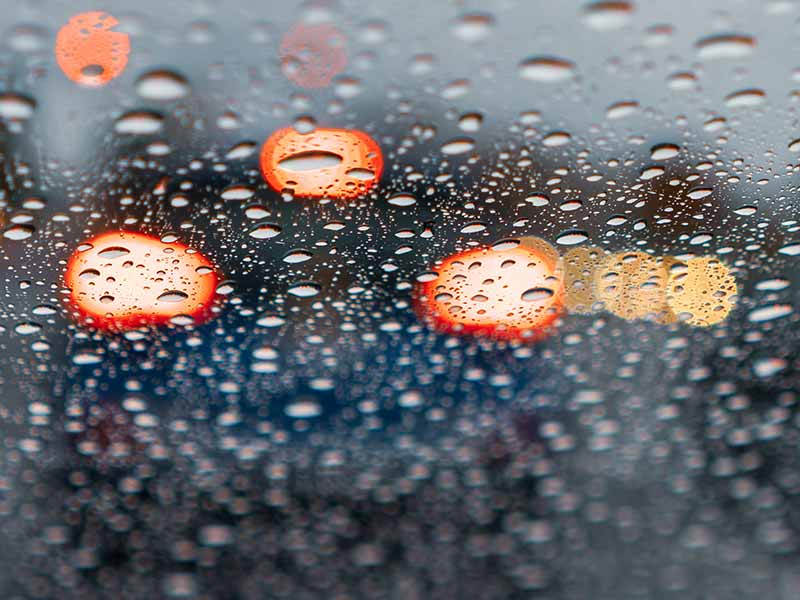If you’ve ever been driving at high speeds and felt your steering wheel not respond when you turn it slightly, you know the sheer terror of hydroplaning.
The good news is it’s not too difficult to avoid losing control on wet roads. Here are a few tips to prevent hydroplaning.
How To Avoid Hydroplaning
- Slow Down
- Avoid Standing Water
- Keep Tread Depth Above 4/32″
- Properly Inflate Your Tires
- Don’t Use Cruise Control
- Increase Following Distance
- Rotate Your Tires Regularly
- Regularly Inspect Your Tire Tread Wear
While all of these tips are good to know, it can be more helpful to understand why we recommend each of them and what you can expect.
Let’s take a closer look.
Slow Down
The biggest factor in your control that effects the likelihood of hydroplaning is how fast you’re driving. Just a slight increase in speed can dramatically increase your chances of hydroplaning.
To put it simply:
The slower you drive, the lower your chance of hydroplaning.
It’s worth mentioning that speed limit signs don’t apply in inclement weather. The posted limits are assuming that the road is dry, clear, and empty. With that being said, you can go as slowly as you need to, if it means staying safe.
Interstates often have minimum speed requirements so be sure to maintain these minimums for your safety and the safety of other vehicles.
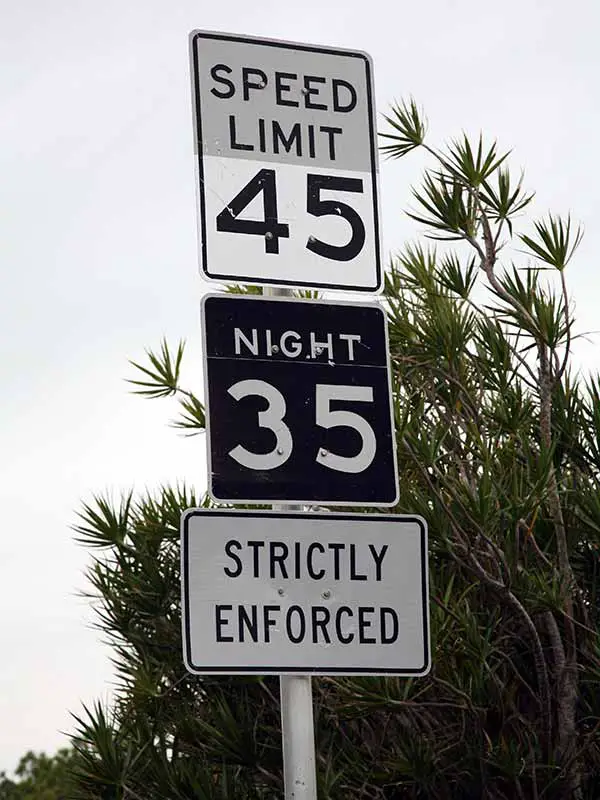
We would advise turning on your hazards and staying in the right-most lane as you slow down. This will help prevent people from rear-ending you if they’re going too fast in a low-visibility area.
You might notice when you’re driving too fast that your steering wheel may start to vibrate, or there are occasional slight loses in grip as you’re driving. These are both early signs of hydroplaning. If you begin to feel these symptoms, you should consider slowing down.
To slow down, never press the brake pedal aggressively. If you slam on the brakes your car can start skidding and losing control. Instead, either allow your car to naturally slow down by releasing the accelerator, or very gently apply the brakes until your tires regain traction.
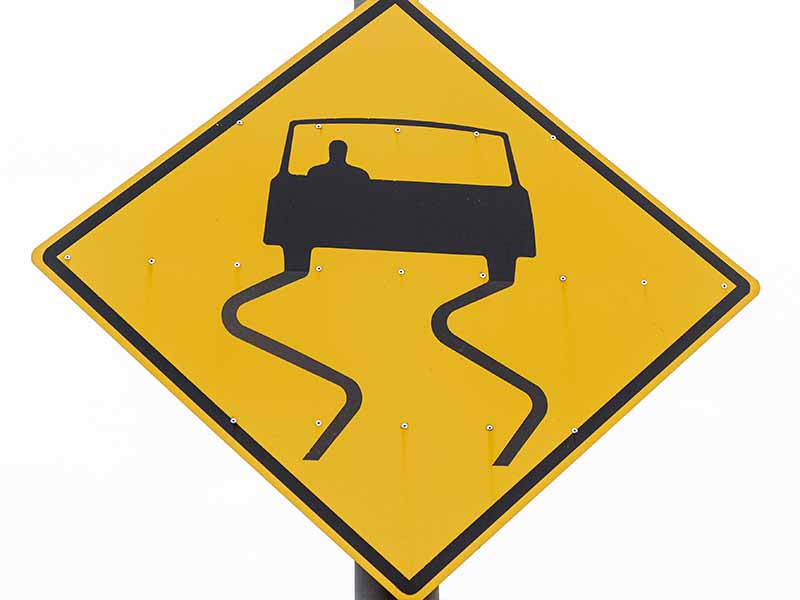
Avoid Standing Water
Puddles and standing water can easily lead to hydroplaning. It doesn’t take much water depth to lose control of your vehicle.
When you drive through moderate to heavy rain your tires are already pushing water out of the way while you drive. When you encounter a puddle or standing water, your tires suddenly become overwhelmed. Your car might lurch and your steering wheel might want to pull hard in one direction.
There’s typically not enough time for your tires to move all of the water out from underneath the contact patch of your tires. Instead, your tire’s tread lifts up on top of the water and loses contact with the road causing you to start to hydroplane.
The slower you go the less chance there is that hydroplaning can occur.
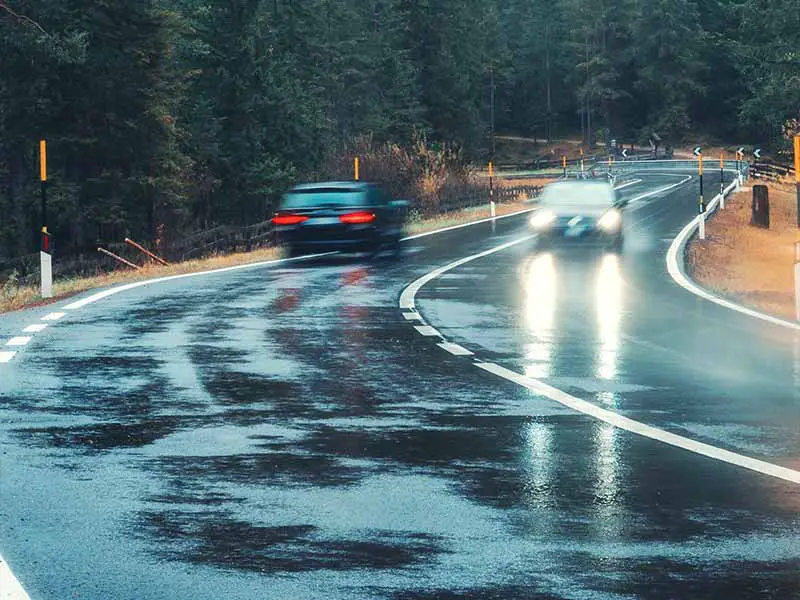
Keep Tread Depth Above 4/32″
Tread depth is another critical component when it comes to hydroplaning. Tire tread depth refers to how thick the pads are on your car’s tires. It’s measured as a depth from the bottom to the top of each block of the tread.
New tires typically come with about 10/32” of tread depth, and experts suggest you consider changing them when they reach 4/32” of tread depth. Once they’ve worn down to 2/32” of tread depth, they will have lost twice the ability to resist hydroplaning they had at 4/32″.
Tread depth determines how much distance is needed to stop, how quickly you can accelerate, and how much grip you have on the road in wet conditions.
The legal minimum tread depth in most states is 2/32″. Most tire professionals will strongly recommend replacing your tires well before they reach this shallow of a depth. The drastic reduction in grip on wet pavement between 4/32″ and 2/32″ is not worth the small amount of money you may save by extending the life of your tires a little more.
Properly Inflate Your Tires
The pressure in your tires will force the rubber into a certain shape. Too much pressure will cause the center of your tread to bulge out, and too little pressure will cause the center to slightly collapse inward.
Overinflated or underinflated tires will not have proper contact with the road surface and even the best tires won’t be able to maintain contact in adverse weather conditions properly.
It’s important that each tire be inflated to the manufacturer’s suggested amount of pressure. To find this, open your driver’s door and look at the door jamb. There is usually a tire information sticker on the jamb or edge of the door. You can also check your vehicle’s owner’s manual.
You should check the pressure in your tires regularly to ensure your tires are able to maintain contact with the road properly. This will also help ensure that your tires wear evenly and last longer.

Other Factors And Suggestions
The following suggestions and considerations will help reduce the risk of hydroplaning or help make recovering from hydroplaning easier or safer.
Don’t Use Cruise Control
It’s convenient to use cruise control when taking longer trips, but you should turn it off when driving in the rain.
If hydroplaning occurs its safer for you to be in full control of your vehicle and prevent any sudden acceleration that a cruise control system may try to apply when your tires loose traction.
Instead, you should rely on your own judgment and your feet working the pedals. This is the best way to get feedback from your car and adjust your speed accordingly.
If you feel your car start to struggle or lose traction, then it’s time to slow down. This is more difficult when your car is using cruise control and can cause a brief moment of confusion or panic.
Increase Following Distance
When driving in the rain your stopping distance will be much longer. For instance, it might typically take you 100 feet to come to a complete stop, but wet roads might extend that out to 150 feet or more even with anti lock brakes.
If your tires lose contact with the road surface due to hydroplaning, your brakes will have almost no effect and you will lose steering control. This means that the normal following distance you maintain on dry road conditions won’t be enough space if hydroplaning occurs.
The only way to have more time to react to someone braking in front of you is if you’re further away from them. This will give you more time to regain control of your vehicle before drifting into the car ahead of you.
Rotate Your Tires Regularly
Tire rotation is a task that you shouldn’t skip. It should be performed every 5,000 miles or so to help ensure that your tires are wearing evenly and are in good condition.
Even tire wear will help ensure your tires maintain good contact with the road and are better able to channel water out from underneath the contact patch of your tires.
Regularly Inspect Your Tire Tread Wear
Uneven tire wear can cause tires that appear to be in good shape to actually be very poor at preventing hydroplaning from occuring.
Just like low tread depth across the entire width of your tires can make hydroplaning more likely, smaller patches across your tread pattern that are unusually worn can also make hydroplaning more likely.
It’s also important to be concious of the current tread wear of your tires so you’ll know to take extra caution if your tires are worn down to lower depths.
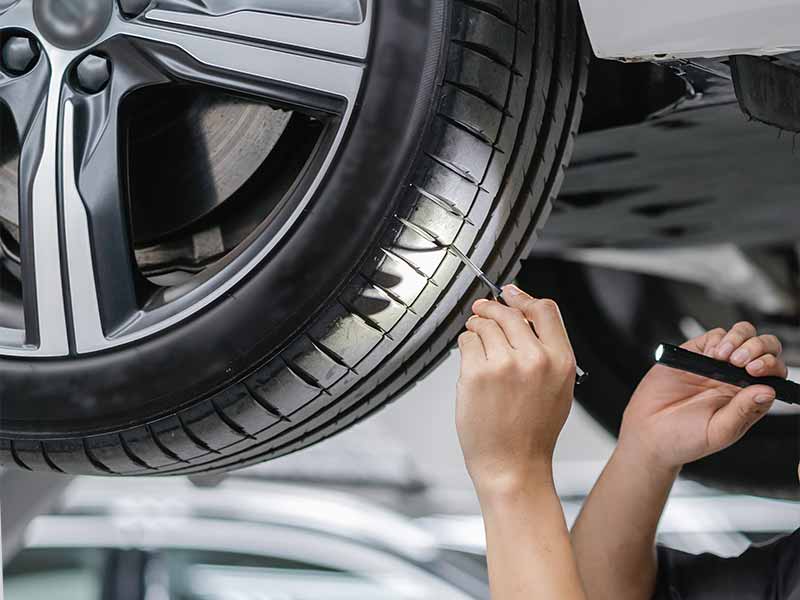
Vehicle Weight
The total weight of your car or truck has a large impact on at what point hydroplaning can occur. Heavier vehicles, such as large trucks, will resist hydroplaning much more easily than a lightweight sports car.
It takes more speed and water depth for a heavy truck to lose traction and control than a much lighter vehicle.
Tire Width
Wide tires create more surface area for water to use to lift a car or truck off the road surface. Narrow tires almost act life a knife that can slice through the water while wide tires are more like a skim boarder skimming across the water’s surface.
Resources
Below are some links you may find helpful when learning about tires
- Avoid hydroplaning through tire & driver education – Bridgestone
- 10 safety tips for driving in the rain – Les Schwab
Final Thoughts
These suggestions will help you reduce the risk of hydroplaning while also helping you be better prepared in the event that hydroplaning does occur.
Rainy conditions should always cause you to pay more attention to your environment and driving conditions. Following these tips to avoid hydroplaning will greatly reduce your risk, but it may not completely eliminate it.
If you do lose traction and begin to hydroplane, remain calm. Gently remove your foot off the gas pedal and avoid hard braking.
Try to maintain traveling in a straight line. But if the vehicle starts sliding to one side or the other, gently turn into the skid.
Once you’ve regained control continue driving so that the vehicles behind you that will be encountering the same conditions won’t hydroplane into your car or truck.
Good luck and happy motoring.
